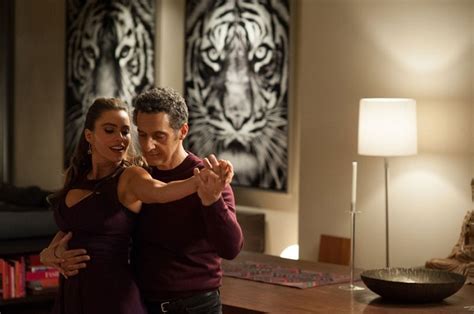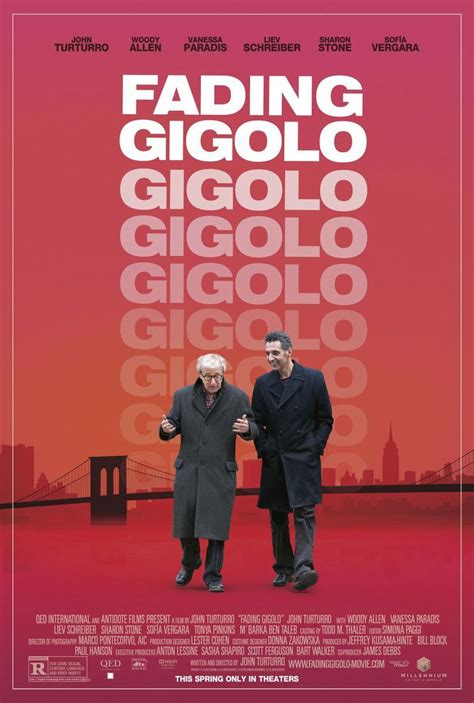The nuances of human connection and the complexities of emotional intimacy are explored in the 2013 film “Fading Gigolo,” written and directed by John Turturro. This movie is a thought-provoking exploration of the themes of love, friendship, and the search for meaning in a seemingly meaningless world. On the surface, “Fading Gigolo” appears to be a straightforward comedy about a man who becomes a professional gigolo, but as the story unfolds, it reveals itself to be a rich tapestry of emotions, relationships, and personal growth.
One of the primary ways in which “Fading Gigolo” explores the human condition is through its portrayal of the complexities of male relationships. The film’s protagonist, Fioravante, played by Turturro, is a man in his mid-50s who finds himself at a crossroads in his life. He is a bookstore clerk who is struggling to make ends meet, and his friend, Murray, played by Woody Allen, convinces him to become a gigolo to make some extra money. As Fioravante navigates this new world, he is forced to confront his own emotions and desires, as well as the emotional needs of the women he encounters.
The character of Fioravante is a fascinating study in contradictions. On the one hand, he is a romantic at heart, who genuinely cares about the women he meets and wants to connect with them on a deep level. On the other hand, he is also a practical man who is aware of the transactional nature of his relationships. This tension between his emotional and practical selves creates a sense of complexity and nuance that is rare in films about relationships.
The film also explores the theme of identity and how it is shaped by our relationships with others. As Fioravante becomes more confident in his role as a gigolo, he begins to reveal different aspects of his personality, and his sense of self expands. At the same time, he is also forced to confront the ways in which his relationships with others define him, and the ways in which he defines himself through those relationships.
The character of Avigal, played by Vanessa Paradis, is a particularly interesting example of this theme. Avigal is a beautiful and alluring woman who is also a devout Orthodox Jew, living in a traditional community in Brooklyn. Her relationship with Fioravante is complex and multifaceted, and it raises important questions about the nature of desire, intimacy, and connection.
Throughout the film, Turturro uses a range of cinematic techniques to explore the themes of love, relationships, and identity. The film’s use of color, lighting, and composition creates a sense of warmth and intimacy, and the performances of the cast are uniformly excellent. The film’s score, which features a range of jazz and classical music, adds to the sense of sophistication and elegance that pervades the film.
One of the most striking aspects of “Fading Gigolo” is its use of long takes and static shots. These techniques create a sense of realism and immediacy, and they allow the audience to become fully immersed in the world of the film. At the same time, they also create a sense of distance and objectivity, which allows the audience to reflect on the themes and emotions of the film.
In terms of its cultural and historical context, “Fading Gigolo” is a film that is deeply rooted in the traditions of European art cinema. The film’s themes of love, relationships, and identity are reminiscent of the films of Ingmar Bergman and Federico Fellini, and its use of long takes and static shots is similar to the style of Michelangelo Antonioni. At the same time, the film is also thoroughly contemporary, and it reflects the complexities and nuances of modern relationships.
In conclusion, “Fading Gigolo” is a film that is both a romantic comedy and a profound exploration of the human condition. The film’s portrayal of the complexities of love, relationships, and identity is nuanced and multifaceted, and its use of cinematic techniques creates a sense of warmth and intimacy. The film’s themes and emotions are deeply rooted in the traditions of European art cinema, but they are also thoroughly contemporary, and they reflect the complexities and nuances of modern relationships.
Understanding the Film's Themes
- Watch the film and pay attention to the ways in which the characters interact with each other.
- Reflect on the ways in which the film portrays the complexities of male relationships.
- Consider the ways in which the film explores the theme of identity and how it is shaped by our relationships with others.
- Analyze the film's use of cinematic techniques, such as long takes and static shots, and how they contribute to the overall mood and atmosphere of the film.
The Film's Strengths and Weaknesses
| Strengths | Weaknesses |
|---|---|
| The film's portrayal of the complexities of male relationships is nuanced and multifaceted. | The film's pacing can be slow at times, which may make it difficult for some viewers to become fully engaged. |
| The film's use of cinematic techniques, such as long takes and static shots, creates a sense of warmth and intimacy. | The film's themes and emotions may not be immediately apparent to all viewers, which may require multiple viewings to fully appreciate. |

What is the main theme of the film “Fading Gigolo”?
+The main theme of the film “Fading Gigolo” is the exploration of the complexities of love, relationships, and identity.
What is the significance of the character of Avigal in the film?
+The character of Avigal is significant because she represents a complex and multifaceted portrait of a woman, and her relationship with Fioravante raises important questions about the nature of desire, intimacy, and connection.


